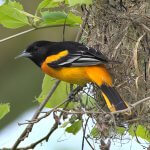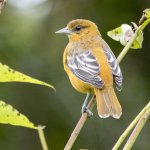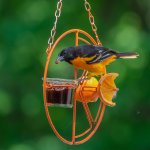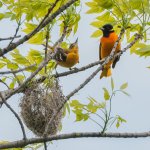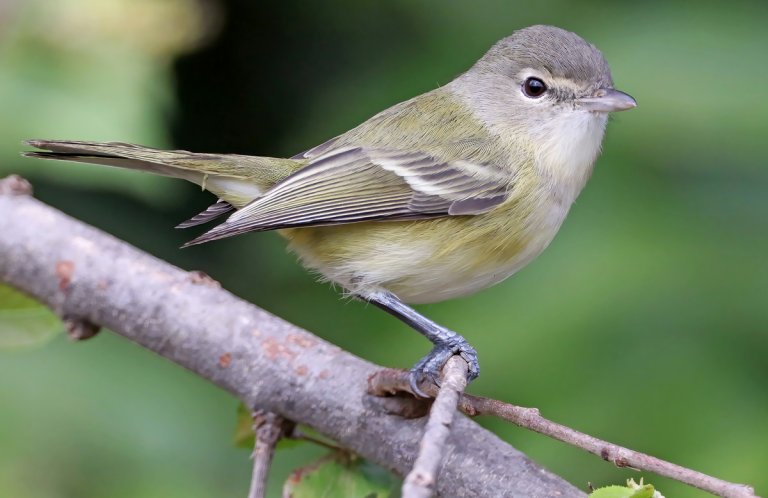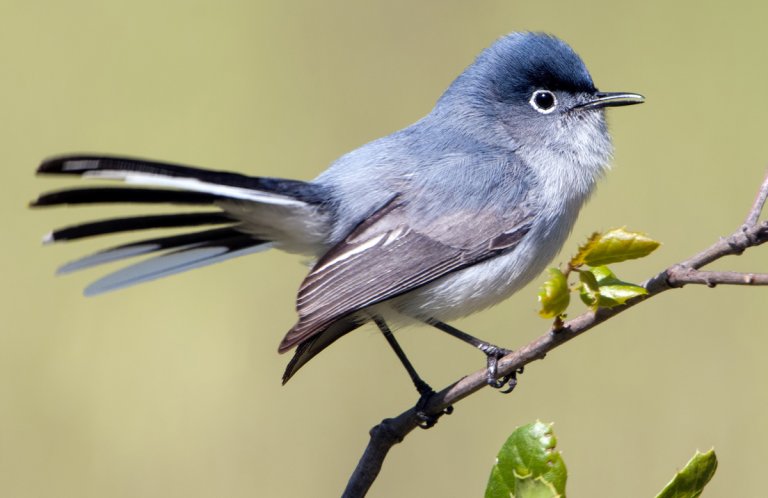About the Baltimore Oriole
The eye-catching orange and black plumage of the Baltimore Oriole echoes the colors on the coat of arms of England's Baltimore family, some of the first administrators of the state of Maryland. The species is Maryland's state bird and the namesake of its pro baseball team.
The Baltimore Oriole and relatives such as the Orchard Oriole are actually members of the blackbird family, so are related to the Eastern Meadowlark, Bobolink, and Tricolored Blackbird.
Oriole of Distinction
The Baltimore Oriole and the more western-ranging Bullock's Oriole have a complicated naming history. They were initially considered separate species, but more detailed studies on their hybridization (which commonly occurs where their ranges meet in the Midwest) led to the species being lumped in 1983. This new species was known as the Northern Oriole. However, subsequent DNA studies showed that they are two separate species (not even closely related), so the American Ornithologists' Union (now known as the American Ornithological Society) re-split them in 1995.
Songs and Sounds
The Baltimore Oriole's song is a clear, rich, and highly variable series of whistles.
Listen to this loud, distinctively-toned song here:
Another version:
One of the Baltimore Oriole's common calls is a harsh chatter, usually heard during aggressive encounters and nest defense. Listen here:
Breeding and Feeding
Building a Better Nest
Each spring, newly arriving male orioles sing constantly from treetop perches to attract a mate. Their distinctive song is often the first clue to their presence. Female Baltimore Orioles also sing, often while foraging, but have a simpler song.
Once mated, the female selects a nest site in the male's territory, and begins to build her pendulous, purse-like nest at the end of a branch. Nest construction usually takes about a week, and proceeds in three stages. First the female builds an outer support structure of plant material, animal hair (especially horsehair), or human-made fibers such as string, then weaves flexible fibers, such as grapevine or Spanish moss, into an inner bowl. To finish, the female oriole lines the nest with downy materials including milkweed seed plumes and feathers.
Male Baltimore Orioles will bring some material to the nest site, but the female does all the nest construction. Baltimore Orioles do not reuse their nests from year to year, but females will sometimes pull apart a previous year's nest for materials.

Once she lays her clutch of 3-7 eggs, the female oriole does all the incubation. Both parents feed the nestlings, which fledge in a few weeks. Baltimore Orioles only raise one clutch per season. They begin to migrate quite early, often leaving their territories as early as July to head south.
Insect Control, Oriole-style
During the breeding season, the Baltimore Oriole voraciously feeds on caterpillars—even hairy ones that many other bird species avoid—insects, and spiders. It forages while moving through the treetops, gleaning from leaves and branches, and even picking insects from spider webs. By feeding on large quantities of larvae and insects, the Baltimore Oriole protects trees from extensive damage, providing a valuable ecological service.
This species is particularly fond of fruit, especially dark-colored fruit such as mulberries and black cherries. It readily visits backyard feeders at all seasons for oranges and other fruit, jam, and nectar.
Region and Range
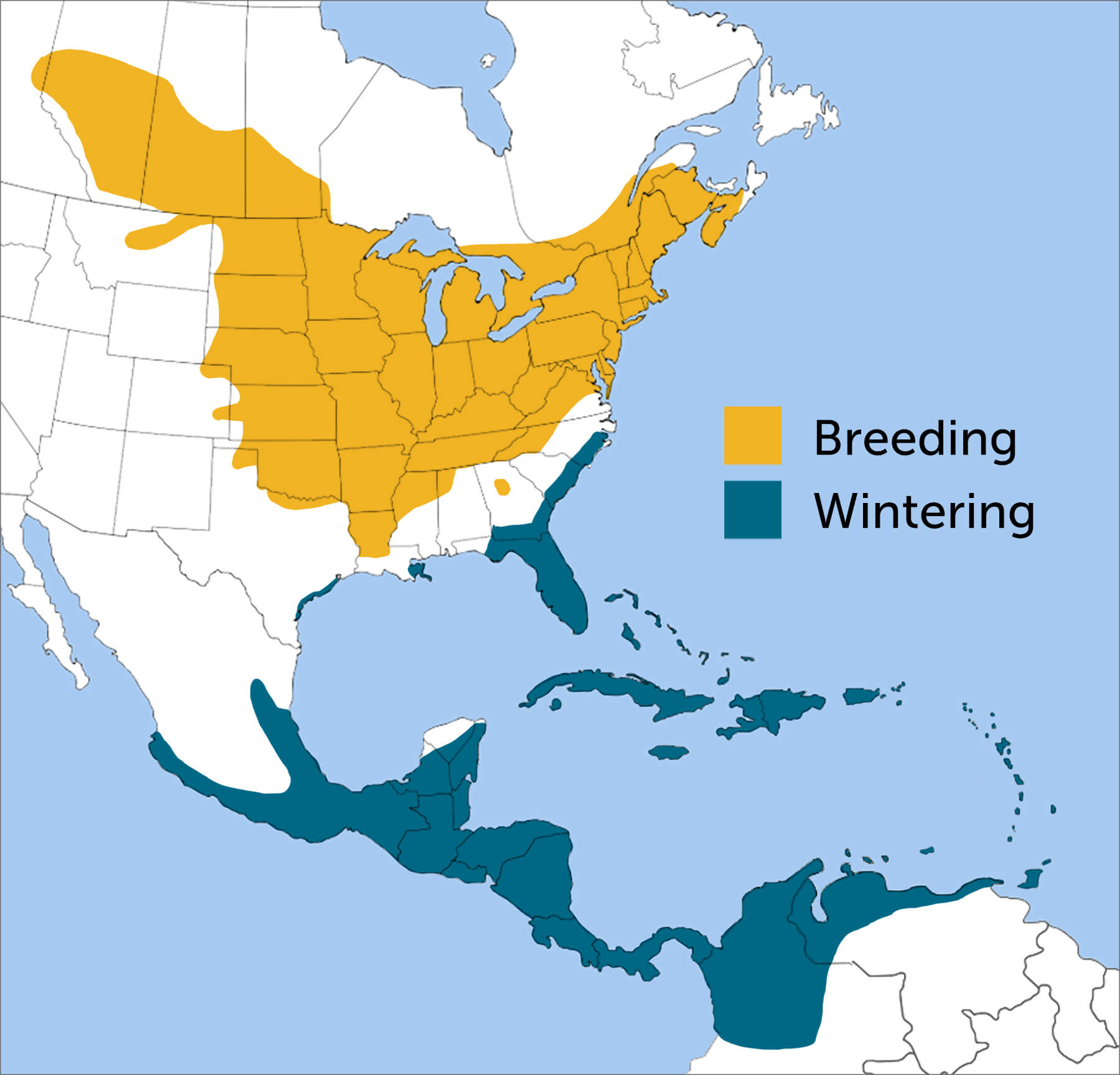
The Baltimore Oriole has an extensive range in North America, mainly east of the Mississippi. It breeds in open woodlands from central Canada and eastern Montana, stretching down through the eastern United States south to Louisiana.
Its winter range is also expansive, stretching from the southern United States, Mexico, the Caribbean, and Central America through northern South America. During this season the Baltimore Oriole can be found in open woodlands, gardens, and edges, as well as shade-grown coffee and cacao plantations.
Conservation
Coffee for Orioles
Although Baltimore Oriole populations are widespread, they have shown declines, particularly as large shade trees such as American Elm have become scarce due to introduced disease. Habitat loss on breeding and wintering grounds, pesticide use, and collisions with glass and towers are other threats to this species.

Help support ABC's conservation mission!
ABC has successfully advocated for the cancellation of pesticides shown to kill the Baltimore Oriole and other birds, and continues to promote bird-friendly building practices to reduce glass collisions.
Baltimore Orioles often winter in the open forest habitat provided by shade-grown coffee and cacao plantations, along with species such as Wood Thrush, Ruby-throated Hummingbird, and Scarlet Tanager. As part of its full annual life-cycle strategy, ABC cooperates with local landowners and nonprofits in Central and South America to protect this important wintering habitat.
Get Involved
Policies enacted by the U.S. Congress and federal agencies, such as the U.S. Fish and Wildlife Service, have a huge impact on migratory birds. You can help shape these rules for the better by telling lawmakers to prioritize birds, bird habitat, and bird-friendly measures. To get started, visit ABC's Action Center.
Living a bird-friendly life can have an immediate impact on migratory birds in the United States. Doing so can be as easy as adding native plants to your garden, avoiding pesticides, and keeping cats indoors. To learn more, visit our Bird-Friendly Life page.
American Bird Conservancy and our Migratory Bird Joint Venture partners have improved conservation management on more than 8.5 million acres of U.S. bird habitat — an area larger than the state of Maryland — over the last ten years. That's not all: With the help of international partners, we've established a network of more than 100 areas of priority bird habitat across the Americas, helping to ensure that birds' needs are met during all stages of their lifecycles. These are monumental undertakings, requiring the support of many, and you can help by making a gift today.






































